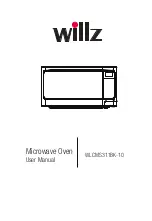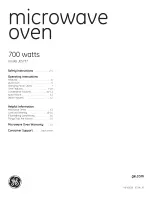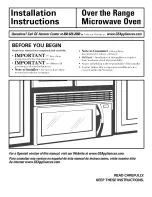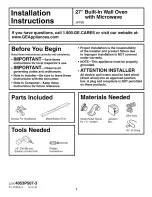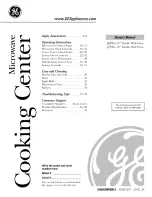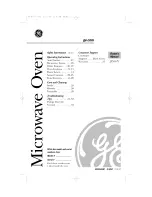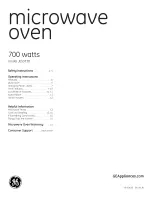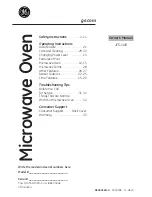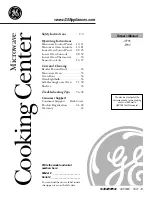
5
INSTALLATION GUIDE
6
UTENSILS GUIDE
1
.
Make sure that all the packing materials are removed from the inside of the door.
2
.
Check the oven for any damage, such as misaligned or bent door, damaged door seals and sealing
surface, broken or loose door hinges and latches and dents inside the cavity or on the door. If there is any
damage, do not operate the oven and contact qualified service personnel.
3
.
This microwave oven must be placed on a flat, stable surface to hold its weight and the heaviest food
likely to be cooked in the oven.
4
.
Do not place the oven where heat, moisture, or high humidity are generated, or near combustible materials.
5
.
For correct operation, the oven must have sufficient air flow. Allow 20cm of space above the oven, 10cm at
back and 5cm at both sides. Do not cover or block any openings on the appliance. Do not remove feet on which
oven stands.
6
.
Do not operate the oven without glass tray, roller support, and shaft in their proper positions.
7
.
Make sure that the power cord is undamaged and does not run under the oven or over any hot or sharp
surface.
8
.
The socket must be readily accessible so the microwave oven can be easily unplugged in an emergency.
This section lists which utensils can be used in the microwave, which ones have limited use for short periods, and
which ones should not be used in the microwave.
Recommended
•
Microwave browning dish — Use to brown the exterior of small items such as steaks, chops, or pancakes. Follow
the directions provided with your browning dish.
•
Microwaveable plastic wrap — Use to retain steam. Leave a small opening for some steam to escape
and avoid placing it directly on the food.
•
Paper towels and napkins — Use for short-term heating and covering; These absorb excess moisture and
prevent spattering. Do not use recycled paper towels, which may contain metal and could ignite.
•
Glass and glass-ceramic bowls and dishes — Use for heating or cooking.
•
Paper plates and cups —Use for short-term heating at low temperatures. Do not use recycled paper,
which may contain metal and could ignite.
•
Wax paper — Use as a cover to prevent spattering.
•
Thermometers — Use only those labeled “Microwave Safe” and follow all directions.
Check the food in several places. Conventional thermometers may be used on microwave food once the food
has been removed from the oven.
Limited Use
•
Aluminum foil — Use narrow strips of foil to prevent overcooking of exposed areas. Using too much foil
can damage your oven, so be careful.
•
Ceramic, porcelain, and stoneware — Use these if they are labeled “Microwave Safe”. If they are not
labeled, test them to make sure they can be used safely.
•
Plastic — Use only if labeled “Microwave Safe”. Other plastics can melt.
5

